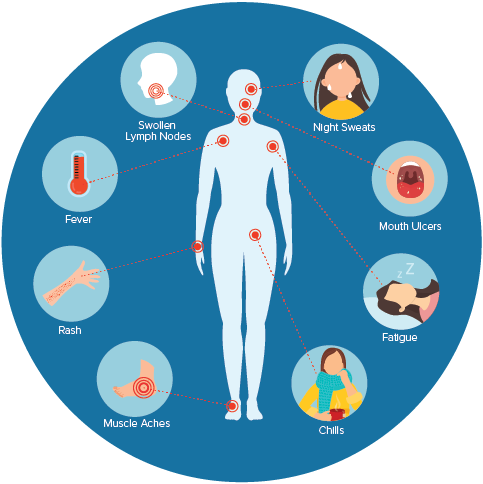Introduction: The Human Immune Virus (HIV) is a deadly viral disease that has claimed lives since the 1980s in different parts of the World. The virus affects mainly Human CD4 cells, but research shows that it may also infect macrophages and some other immune cells. HIV belongs to the retrovirus group. They are RNA-containing viruses that replicate with the help of the reverse transcriptase (RT) also known as RNA dependent DNA polymerase. [READ ABOUT RNA]
Viral replication targets: Retroviruses do not replicate in non-dividing cells because they use cellular mechanisms to carry out their activities. Similarly HIV also requires activation and division of T cells for the viral particle synthesis. The viral genes are transcribed and translated by the host cell mechanisms and later several other new viral particles can be assembled and disseminated [RETROVIRUSES]
Viral entry into the human CD4: The binding of HIV with target cell is through a receptor mechanism with use of cell surface receptors and their incorporation with the viral envelope proteins. The GP120 of the virus envelope will specifically bind with CD4 molecule on the surface of target cells. The CD4 molecules are present on the surface of T-helper cells and therefore helper cells receive the maximum attack of HIV. Macrophages, monocytes, Langerhans' cells, follicular dentritic cells and glial cells are also susceptible to HIV entry and propagation. Macrophages act as the reservoir of the virus. [MACROPHAGES]
Replicability, growth and multiplication of HIV: Replication of HIV The virus has an extraordinary rate of replication; over 10 billion particles are produced per day inside the host. After entry, the viral RNA is acted upon by the reverse transcriptase (RT). Based on the RNA, a DNA strand with complementary sequence (minus strand) is produced. Then RNA strand is hydrolysed by RNase-H. Keeping the DNA minus strand as the template, a complementary (plus strand) of DNA is synthesised. This DNA double strand (proviral DNA) migrates into the nucleus of the host cell. The viral DNA is then integrated into the host cell DNA by the action of the viral integrase. Assembly and Maturation of HIV The products of gag and pol genes, proteins p55 and p160, the precursor big proteins are incorporated into the virus assembly. These are then inserted to host cell membrane. Then the virions are evaginated out. During this process, part of the host membrane, along with gp120 and gp 41 are added. The infected host cell lives only for a day and half.
RELATED;
2. MUMPS VIRUS
3. HIV/AIDS











No comments:
Post a Comment